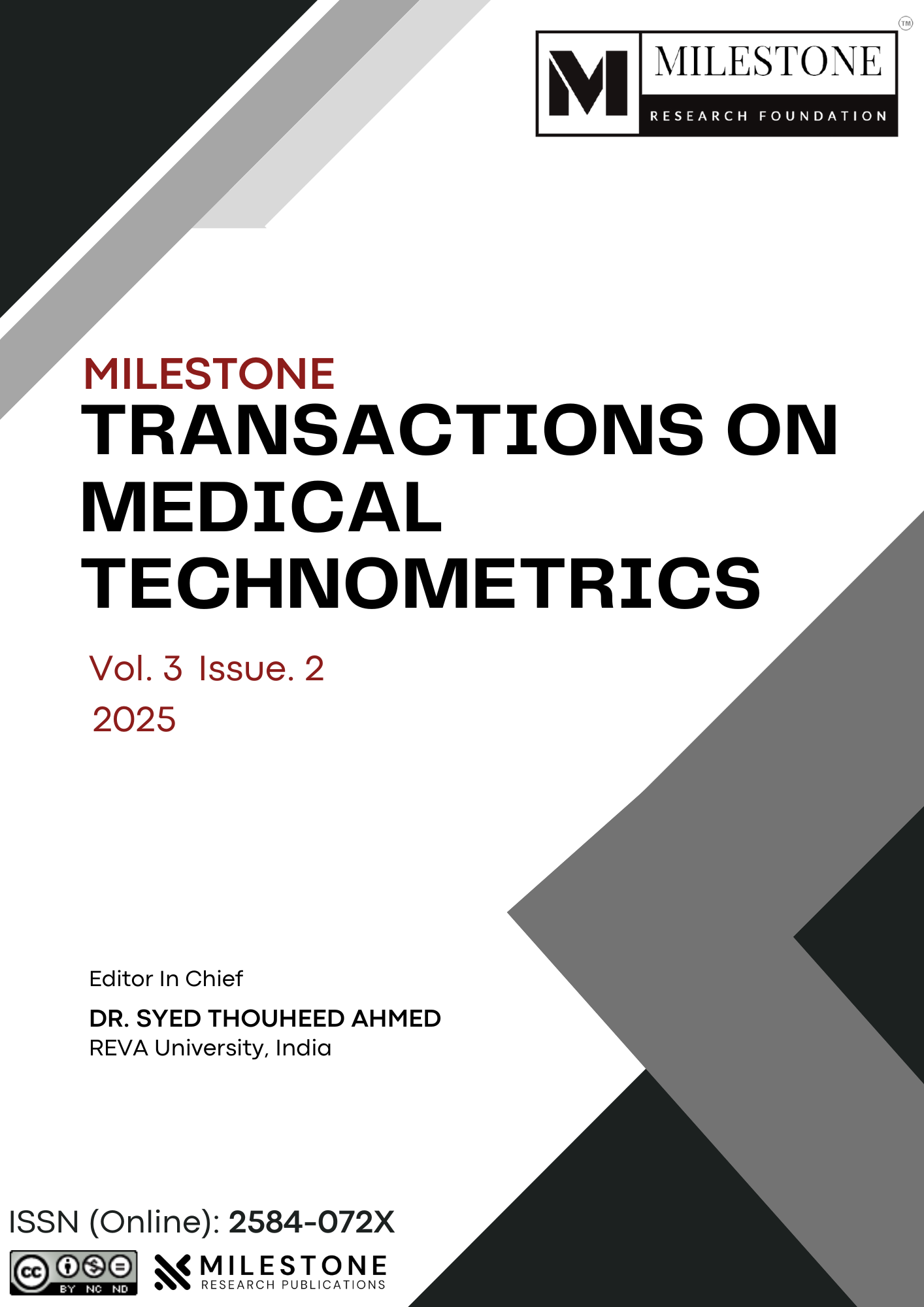Articles
Early Detection of Autism Spectrum Disorder using Transfer Learning on Brain Imaging Data
Published 2025-04-23
Keywords
- Autism Spectrum Disorder,
- Deep Learning,
- Convolutional Neural Networks,
- Transfer Learning,
- fMRI
How to Cite
K Sai Sree, G Kavitha, C S Umar Farooq, P Venkata Reethika, S Venkata Sai Kumar, & C Sreenivasulu. (2025). Early Detection of Autism Spectrum Disorder using Transfer Learning on Brain Imaging Data . Milestone Transactions on Medical Technometrics, 3(2), 214–225. https://doi.org/10.5281/zenodo.15267784
Abstract
This study focuses on classifying and representing learning tasks using powerful deep learning models, including Convolutional Neural Networks (CNN) and Transfer Learning algorithms. The analysis utilizes data from the Autism Brain Imaging Data Exchange (ABIDE I and ABIDE II) datasets. It explores the application of deep learning techniques to enhance the detection of Autism Spectrum Disorder (ASD). Functional magnetic resonance imaging (fMRI) data has shown potential in identifying brain irregularities associated with ASD. We utilize Convolutional Neural Networks (CNNs) combined with transfer learning to analyse fMRI data from the Autism Brain Imaging Data Exchange (ABIDE) dataset. Our optimized CNN model achieves an accuracy of 81%, surpassing conventional classification models. This research establishes deep learning as a promising tool for ASD diagnosis, evaluated based on accuracy, precision, and recall .References
- Thomas, R. M., et al. (2020, May). Classifying autism spectrum disorder using the temporal statistics of resting-state functional MRI data with 3D convolutional neural networks. Frontiers in Psychiatry, 11, Article 440.
- Kumar, A., Pathak, P., & Stynes, P. (2020). A transfer learning approach to classify the brain age from MRI images. In Proceedings of the International Conference on Big Data Analytics (pp. 103–112).
- Yang, X., Zhang, N., & Schrader, P. (2022, June). A study of brain networks for autism spectrum disorder classification using resting-state functional connectivity. Machine Learning with Applications, 8, Article 100290.
- Heinsfeld, A. S., Franco, A. R., Craddock, R. C., Buchweitz, A., & Meneguzzi, F. J. N. C. (2018, August). Identification of autism spectrum disorder using deep learning and the ABIDE dataset. NeuroImage: Clinical, 17, 16–23.
- Lawan, A. A., & Cavus, N. J. (2022). A clinical validity-preserving machine learning approach for behavioral assessment of autism spectrum disorder. OBM Neurobiology, 6(3), 1–40.
- Hameed, M. A., et al. (2022, May). An AI-enabled Internet of Things based autism care system for improving cognitive ability of children with autism spectrum disorders. Computational Intelligence and Neuroscience, 2022, Article 2247675.
- Gazzar, A. E., Cerliani, L., van Wingen, G., & Thomas, R. M. (2019). Simple 1-D convolutional networks for resting-state fMRI based classification in autism. In Proceedings of the International Joint Conference on Neural Networks (IJCNN) (pp. 1–6).
- Yang, X., Schrader, P. T., & Zhang, N. (2020). A deep neural network study of the ABIDE repository on autism spectrum classification. International Journal of Advanced Computer Science and Applications, 11(4), 14.
- Rai, N., Pradhan, P., Saikia, H., Singh, O., & Bhutia, R. (2023). Deep neural network-based classification of ASD and neurotypical subjects using functional connectivity features derived from resting-state fMRI data. In Machine Learning in Information and Communication Technology (pp. 125–129). Springer.
- Ruan, M., Webster, P. J., Li, X., & Wang, S. (2021). Deep neural network reveals the world of autism from a first-person perspective. Autism Research, 14(2), 333–342.
- Dominic, N., Cenggoro, T. W., Budiarto, A., & Pardamean, B. J. (2021, May). Transfer learning using inception-ResNet-v2 model to the augmented neuroimages data for autism spectrum disorder classification. Communications in Mathematics and Biology and Neuroscience, 2021, Article 39.
- Subah, F. Z., Deb, K., Dhar, P. K., & Koshiba, T. J. A. S. (2021). A deep learning approach to predict autism spectrum disorder using multisite resting-state fMRI. Applied Sciences, 11(8), 3636.
- Sherkatghanad, Z., et al. (2020, January). Automated detection of autism spectrum disorder using a convolutional neural network. Frontiers in Neuroscience, 13, Article 1325.
- Aghdam, M. A., Sharifi, A., & Pedram, M. M. (2019). Diagnosis of autism spectrum disorders in young children based on resting-state functional magnetic resonance imaging data using convolutional neural networks. Journal of Digital Imaging, 32(6), 899–918.
- Ma, R., et al. (2023). Autism spectrum disorder classification in children based on structural MRI features extracted using contrastive variational autoencoder. arXiv preprint. https://arxiv.org/abs/2307.00976

